
Fruits From Mexico: Juicy Delights from Mexico’s Sunny Orchards
Fruits From Mexico: Juicy Delights from Mexico’s Sunny Orchards
Hola amigos! Welcome to a flavorful journey through Mexico’s sweet secrets.
In this tantalizing exploration, I delve into the succulent world of Mexican fruits, where each bite is a burst of sunshine and every orchard tells a story of rich agricultural heritage.
Due to our excellent geographical location and the enormous diversity of climates and territories, Mexico offers a great variety of fruits available all year round.
Which Fruits are Native to Mexico?
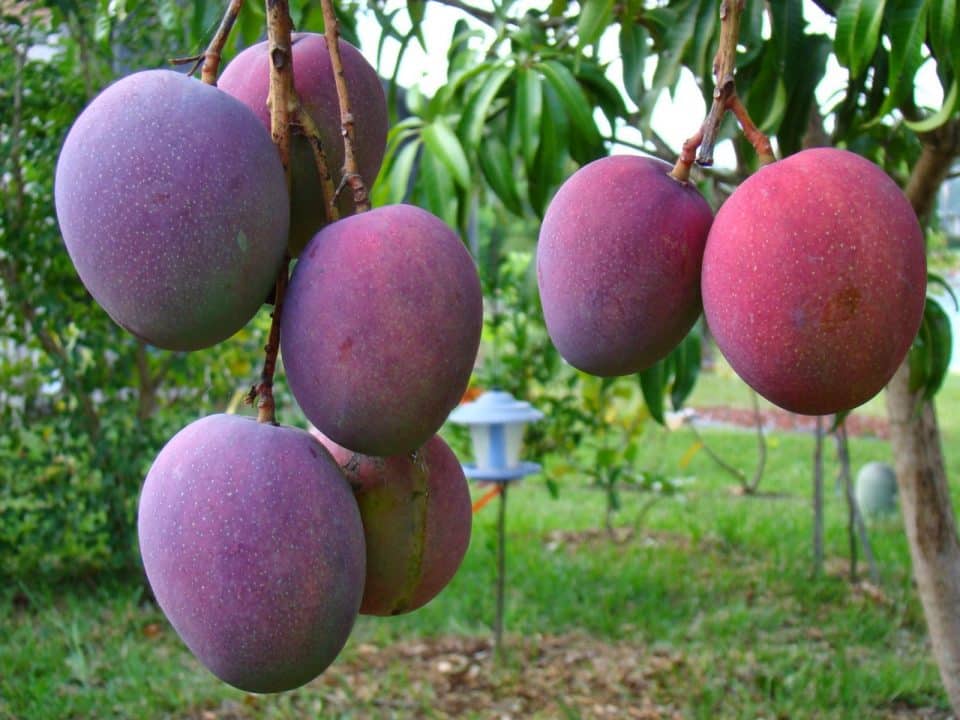
There are nearly 780 fruit species in Mexico, of which 110 are commercially cultivated, and around 50 are native.
Despite the large number of Mexican fruit species, there are few efforts to study them from a food, agricultural, and industrial perspective.
Thus, today, I will only talk about the most used and representative fruits of Mexico. And even so, I’m sure there will be quite a few you’ve never even heard of.
Top 18 Fruits of Mexico
The richness of our country is impressive. Proof of this is that there is a great variety of fruits native to Mexico.
Many products originated in Mexico and spread worldwide after the conquest. Let’s begin:
1. Tuna

Yes! Perhaps this is the flagship of Mexican fruits. I love these with lime, salt, and chili powder. Delicious!
La Tuna is the prickly pear cactus, that grows almost everywhere in Mexico.
It can be found in pink, green, and yellow, and is mostly eaten as I described above or to make a tasty jam.
2. Tejocote
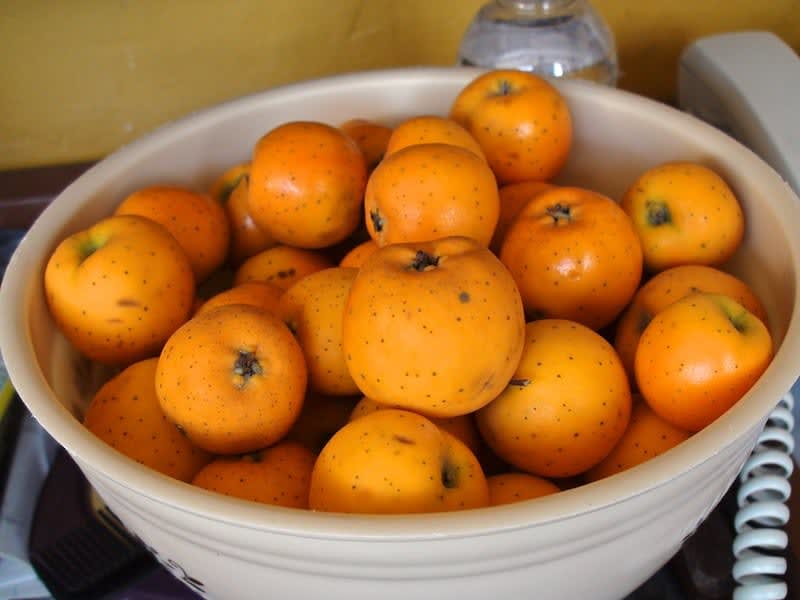
Tejocotes are small rounded dry fruits, with yellow and solid pulp formerly known as “stone fruits.”
I don’t recommend eating Tejocotes alone. Although their flavor is not bad (bittersweet), they are very dry and leave a weird sensation in your mouth.
The time of the year when Tejocotes shine is Christmas, as is the main ingredient of the traditional Christmas punch.
Nevertheless, it is also used to make ates (a type of candy), jams, and preserves.
3. Nanche
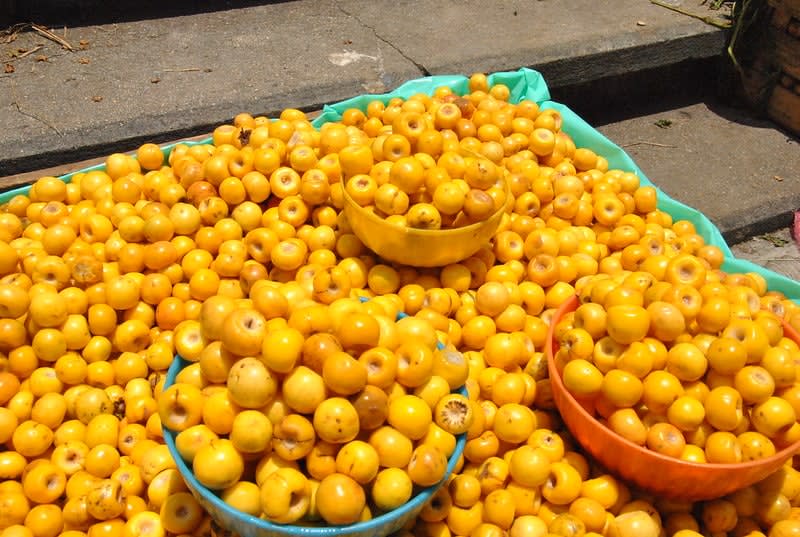
The Nanche tree was sacred for the Mayas. They also believed that this fruit provided them with lots of energy and important nutrients.
And perhaps they were right, Nanche is a good source of vitamin E, a nutrient that works as an antioxidant and, together with vitamin C, helps protect and strengthen the immune system. Nanche also contains vitamin K, which is responsible for proper blood clotting.
According to several studies, Nanche infusion aids digestion, in addition to alleviating other common gastrointestinal discomforts.
The caloric intake of the nanche is only 70 calories per 100 grams, which makes it an ideal fruit to add to the diet.
Various liquors and agua fresca is made from Nanches, also used for dyeing.
It is particularly fragrant, round, small, orange-yellow colored. Its flavor is sometimes tasteless and bittersweet.
To be honest, this is the least of my favorite fruits. In fact, I can’t even stand the smell. While almost every person I’ve met love it, I hate it! Lol.
4. Capulin
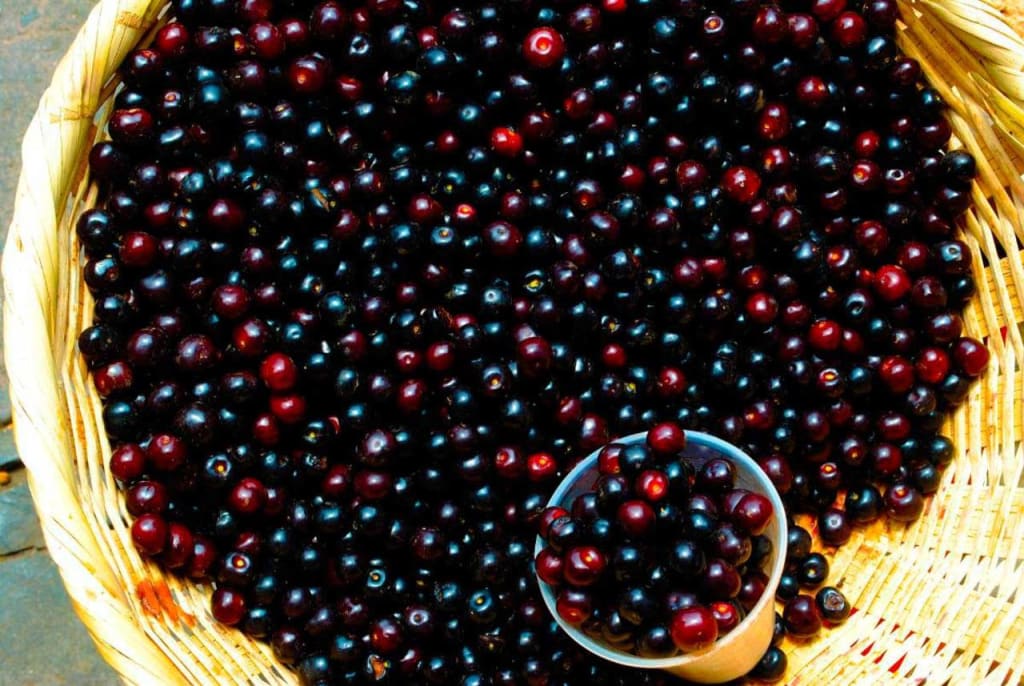
The Capulin is a small fruit consumed in Mexico since pre-Hispanic times, also known as Mexican cherry.
Its name comes from the Nahuatl word capolcuahuitl, composed of capolin/cherry tree and cuahuitl/tree.
The capulin is a very small round fruit, approximately 1 or 2 centimeters in diameter, reddish black, fleshy and with a small seed inside.
It belongs to the cherry family, although its flavor is more bittersweet and astringent, that is, it causes a bitter and dry sensation on the tongue.
Currently, the Capulin is grown in five states: State of Mexico, Puebla, Veracruz, Mexico City and Jalisco.
Although this fruit is mainly consumed raw, it is perfect for preparing sweets and jams, and in some regions of the State of Mexico they use it to prepare tamales, called “capultamal.”
5. Zapote Negro, a Mexican Fruit full of vitamins
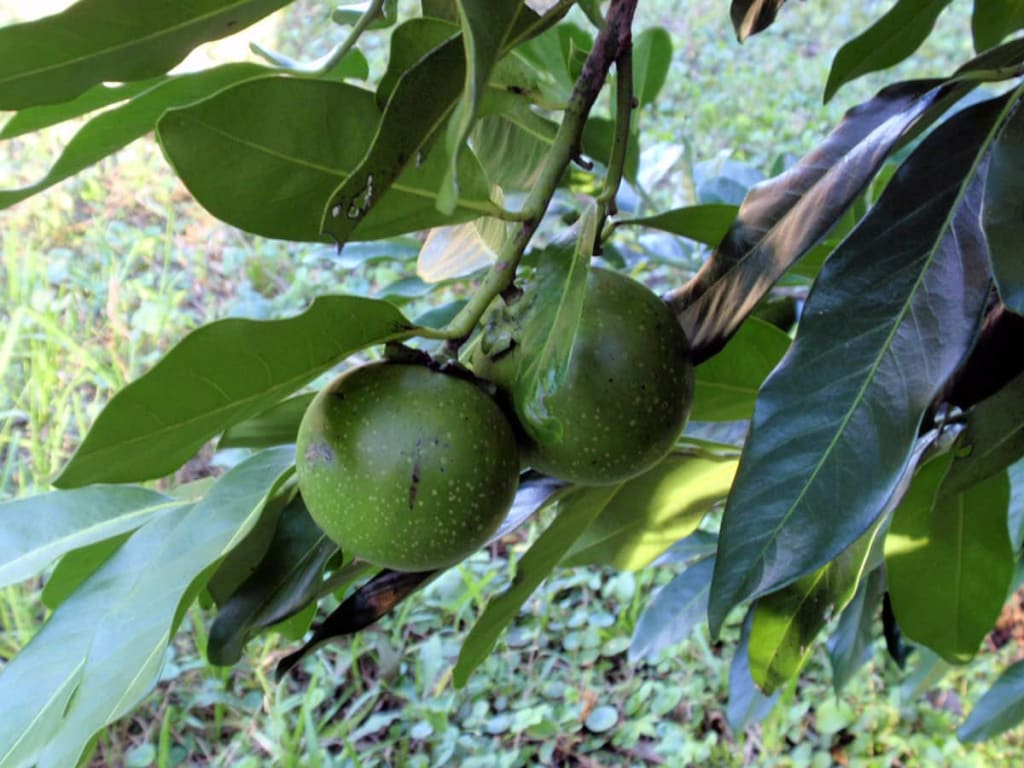
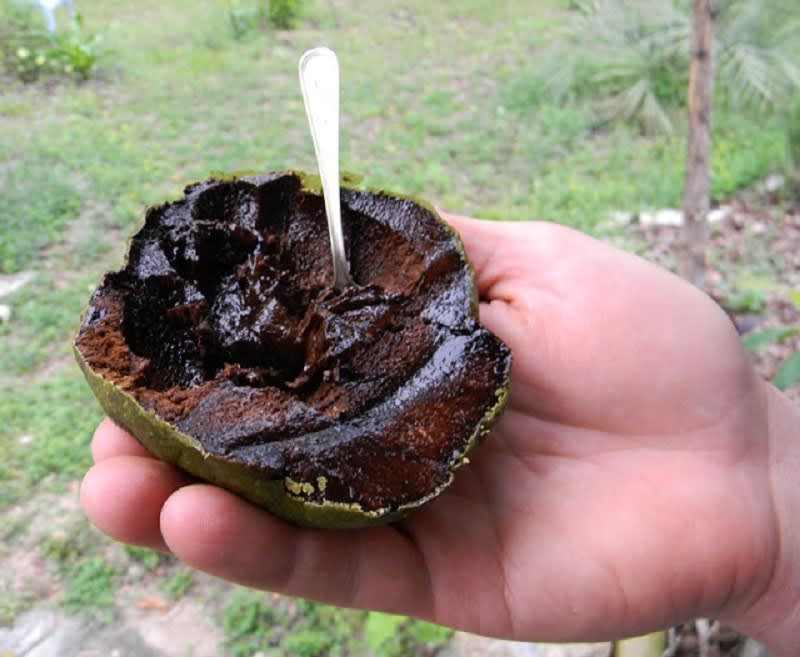
The “black sapote,” whose name comes from the Nahuatl tzapotl and is known by the Mayans as tauch, is a brownish-green fruit on the outside, while inside it has a sweet brownish-black pulp.
In Mexico, the Zapote Negro grows on the coasts of Jalisco, Chiapas, Campeche, Veracruz and Yucatan.
The harvest season runs from June to September reaching about 16 thousand tons.
Due to its appearance and color, many people look askance at eating Zapote, however, its pulp is soft like mousse and very sweet.
In terms of flavor, it has notes of caramel, but its real attraction is hidden in its nutritional and medicinal properties.
During pre-Hispanic times it was widely consumed.
The sapote grows on a tree of the same name, whose height can reach 20 meters and has thick branches.
In addition to its use as a fruit producer, the wood of the sapote tree is used for furniture production.
In folk medicine, Zapote is used as a mild natural laxative. It also helps to combat insomnia and its antibiotic properties relieve sore throats.
Zapote also has a great presence in Mexican gastronomy, as it is used in desserts, mixed with orange juice. Combined with cocoa, it is an excellent food supplement that provides energy for a whole day.
It can also be found in aguas frescas, ice cream, or smoothies.
6. Zapote Amarillo (Yellow Zapote)
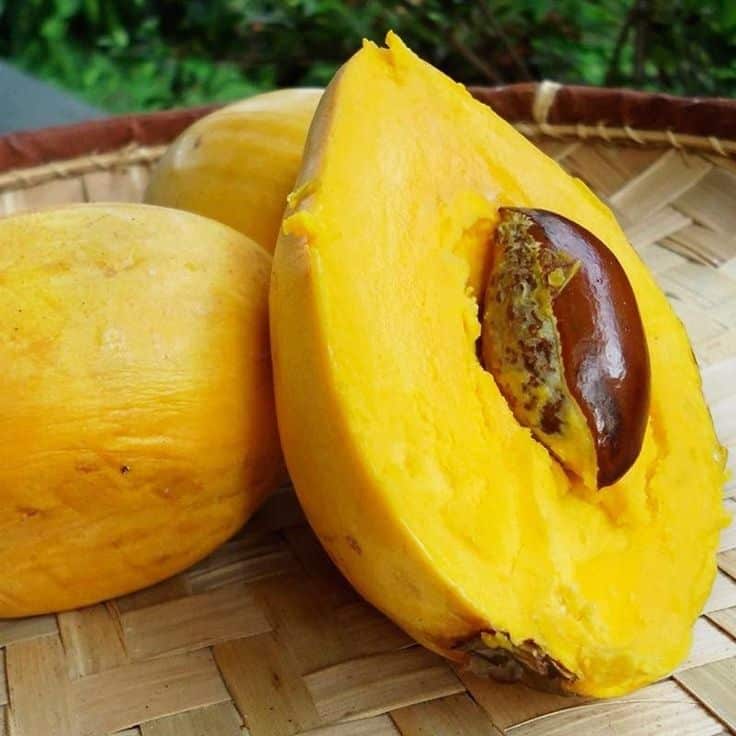
The yellow Zapote is another of the typical fruits of Mexico, its production is mainly in Yucatan, Campeche, and Oaxaca.
The consumption of this fruit has been associated with the prevention of certain diseases such as cardiovascular and ocular diseases since it has an antioxidant effect.
Zapote Amarillo can be eaten fresh or processed. However, it is highly perishable since it deteriorates rapidly and therefore, more information is needed on post-harvest handling and care for maximum use of the fruit.
7. Zapote Blanco (White Zapote)
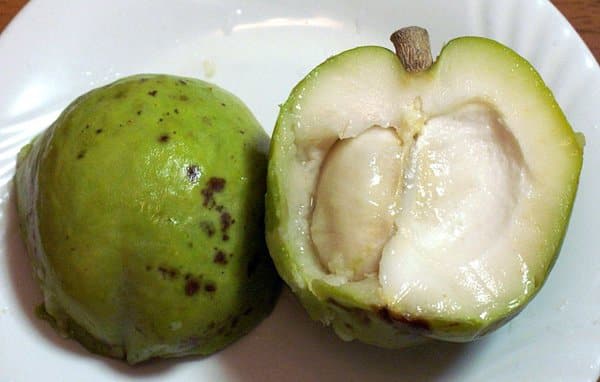
Yet another Mexican fruit from the Zapote family, the white Zapote is a seasonal fruit ideal to complement your diet, as it contains high nutritional value.
According to the Ministry of Agriculture and Rural Development, the pulp of the ripe fruit can be used for sweet recipes such as fruit cocktails, salads or simply served as a dessert.
You can make ice cream, agua fresca, a smoothie, and even jam with Zapote blanco.
White Zapote is also rich in vitamins C and A which help stimulate and strengthen the immune system.
On the other hand, this fruit has sedative properties that contribute to relaxing the nervous system, so it helps to fall asleep in cases of insomnia.
It also has diuretic properties, since white Zapote benefits the functioning of the kidneys.
Another benefit of eating white sapote is to improve the metabolism in the body, as it helps to facilitate the digestive process, making it an ideal food to regulate digestion when suffering from constipation.
In addition, as a sudorific, the white Zapote helps the body get rid of toxins through the skin’s sweat.
8. Chicozapote
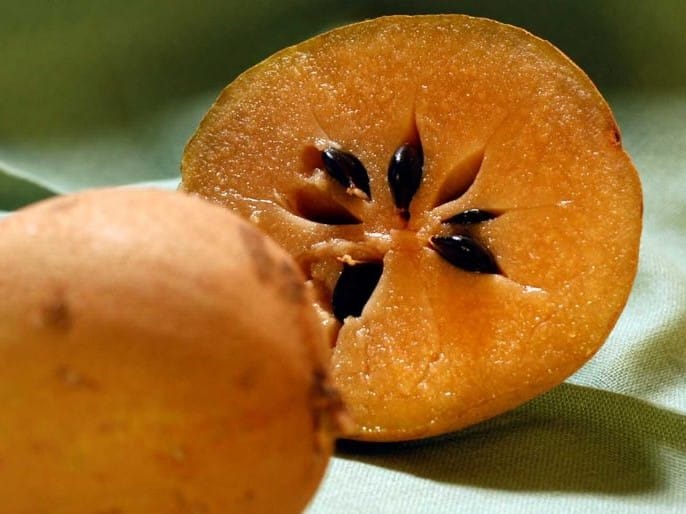
Chicozapote was a sacred tree for the Mayas, whose resin conquered the world.
Its origin is from southern Mexico and Central America; it was later taken to the Antilles and has been very popular in Asian countries such as Indonesia, India, China, Cambodia, Thailand, and the Philippines.
Chicozapote is attributed with curative properties against dysentery and diarrhea; it is also an effective remedy to reduce fever.
It is a rich source of fiber and antioxidants, making it an excellent ally for your visual, respiratory, circulatory, and digestive health.
The wood of this tree is very appreciated for its toughness, and the resin is used to make chewing gum. It is a delicious-tasting fruit that can be eaten raw or in ice cream.
9. Guava: One of the most popular fruits of Mexico

The home of Guava is the town of Calvillo in the state of Aguascalientes.
The indigenous people considered this fruit as a blessing. They grow on trees of the Psidium genus.
Most of the Guavas are yellow (although others are green), semi-sweet, and have a strong aroma. It is also rich in vitamin C.
Its main use is in sweets, juices, jams, ice pops, and preserves.
10. Jicama
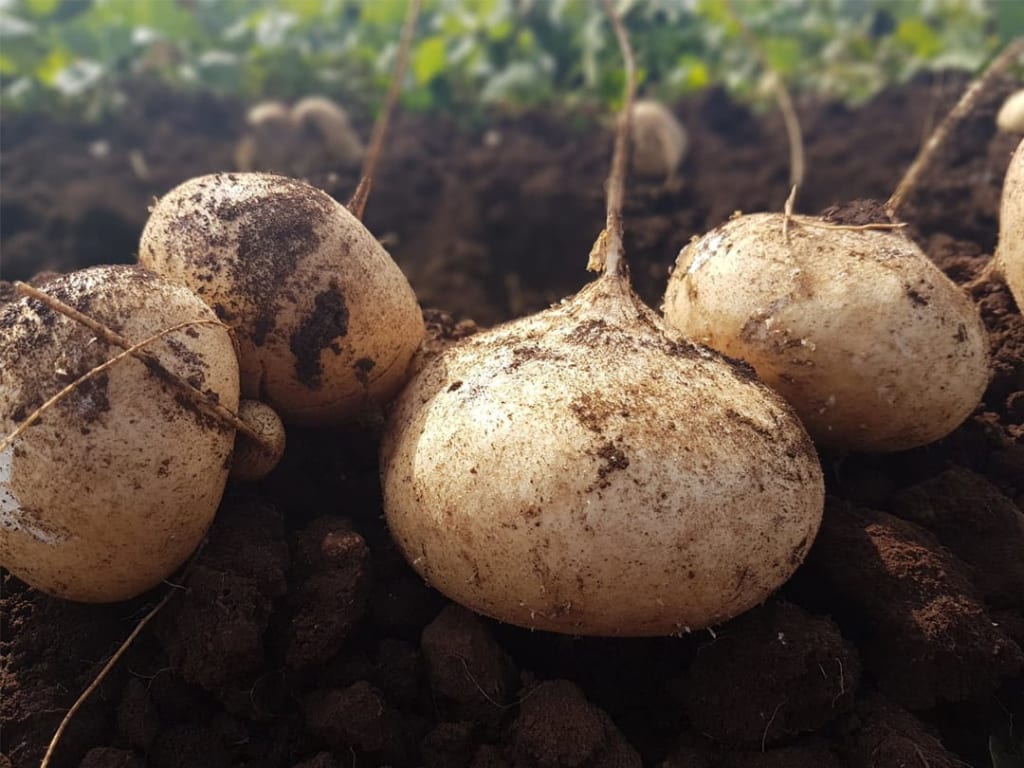
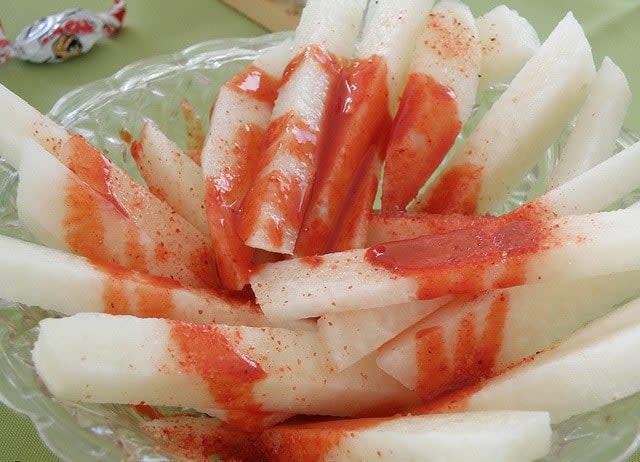
Jicama is not exactly a fruit as it is sometimes thought, it is a tuber that belongs to the legume family Fabaceae, like beans, broad beans, chickpeas, etc., but its pods are not consumed because they contain a toxic substance.
Its name comes from the Nahuatl word xicamatl, which means “watery root,” and is considered a Mesoamerican crop that reached Central America, Peru, and Ecuador.
Because of its appearance and origin, it is also known as “Mexican turnip” and in the United States as “yambean.”
It is sown around March and June and harvested between September and December.
Jicama-producing states in Mexico are mainly Guanajuato, Michoacán, Morelos, and Nayarit.
11. Guamuchil
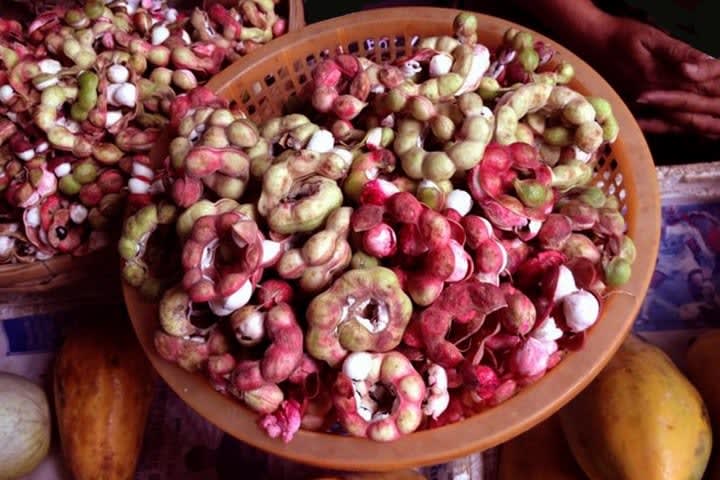
Guamuchil is sweet with slightly bitter notes; this wild delicacy is found in the hot climate states of the country.
Many people refuse to eat them because Guamuchiles are known to produce a lot of intestinal gases.
However, these gases exert a strong antiseptic action on the digestive tract thereby preventing the development of microbes and bacteria.
Therefore, Guamúchiles prevents and cures stomach and intestinal diseases, such as colitis, gastroenteritis, dysentery, typhoid fever, and even typhoid, saving many lives during the season.
Guamuchiles are always eaten raw as long as they are ripe (when the outside achieves a pinkish color and the pods burst and the seed is black).
12. Mamey

The Mamey is one of the most textured and colorful fruits in Mexico, so rich and nutritious that it allows you to taste it in different ways.
Mamey belongs to the Zapote family, also called “mamey zapote” or “red zapote.”
Distinguished by its oval shape, the Mamey has thin skin with a rough texture, reddish pulp, and sweet thick flavor.
Without dedicated Mexican producers, this fruit would not be able to reach the market.
In Mexican gastronomy, Mamey is versatile, used for ice creams, sweets, smoothies, and adds an exotic touch to some desserts.
13. Papaya
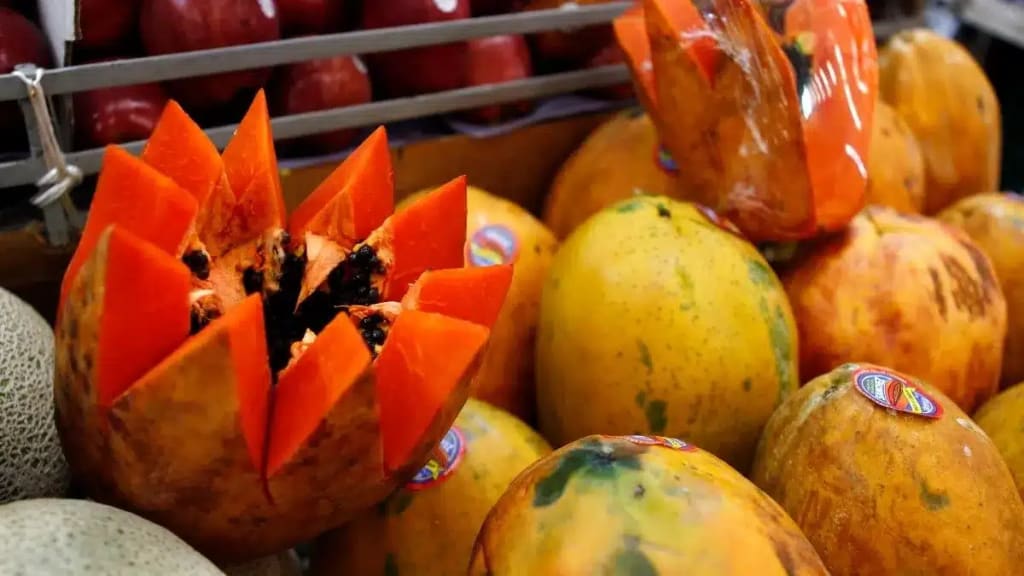
Papaya is a tropical fruit grown in Mexico. This delicious and healthy fruit has its origin in tropical America. It needs a warm, humid climate, with plenty of sunshine and away from strong drafts.
The fruit is oval-shaped, green or orange on the outside, and depending on the type of papaya, its interior can be yellow or orange. Inside it has a soft, pulpy texture and shiny black seeds.
The papaya is also called lechosa, mamona, chamburo, melon, zapote, fruit bomb, machauick, mapaña, and higuera de Indias.
Although there are different varieties of papaya, the most common in Mexico is the “maradol,” which comes from Cuba.
14. Guanabana (soursop)
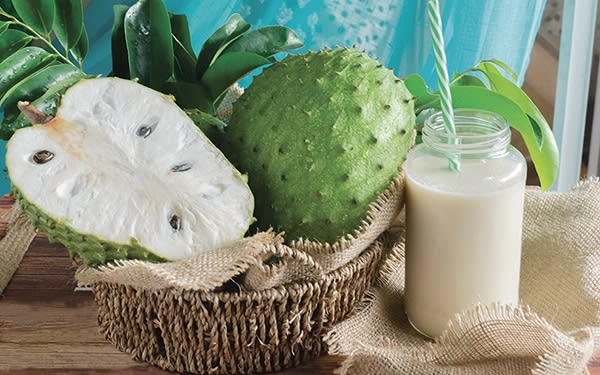
Guanabana is another tropical fruit of greenish color and white fleshy and silky pulp, it has a sweet and sour flavor, is rich in vitamin C, and is mainly used for the elaboration of juices, ice creams, jellies, and agua fresca.
Although Guanabana’s origin is not Mexican, it is a fruit that has been present in the Mexican countryside for years.
15. Avocado
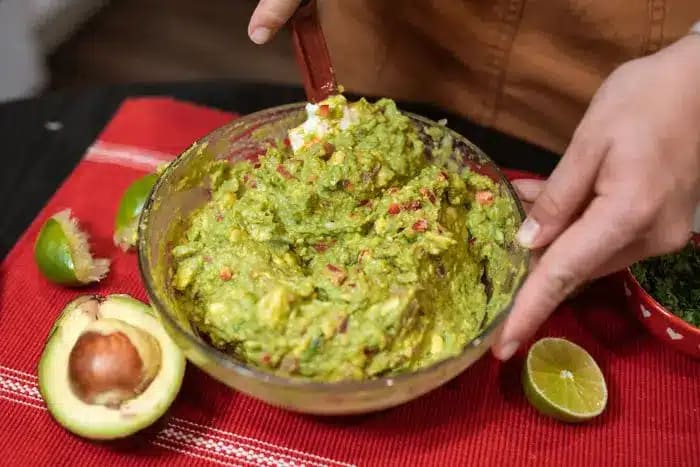
Holy Guacamole! The avocado is one of the main products harvested in Mexico, with great potential, as it excels in production, has a positive impact on the economy, and is essential in our diet.
This tree is native to Mesoamerica, originating in the central part of Mexico and some parts of Guatemala.
The earliest evidence of edible use of the avocado comes from the cave of Coxcatlan in Tehuacan, Puebla with an antiquity of 7,000 to 8,000 years.
Why is Avocado so special?
Undoubtedly because of its extraordinary flavor, consistency, color, and amazing culinary versatility, it can be enjoyed in simple ways such as an avocado taco, soups, creams, stews, avocado-based sauces, and, of course, in guacamole, Mexico’s culinary flagship.
The state of Michoacán is the leading producer with 85 percent of the avocado production, more than one million tons.
Other states with some participation, although not more than 15 percent of the total volume combined, are: Jalisco, the State of Mexico, Nayarit, Morelos, and Guerrero.
16. Xoconostle

Whether raw or in stews, Xoconostle is one of the most rare and delicious fruits in Mexico with outstanding benefits.
The xoconostle is a Mexican fruit famous for resembling the prickly pear (the Tuna I talked about earlier).
So what is the difference?
The main difference between prickly pear cactus and xoconostle is the flavor, which contrasts with the sweet taste of the prickly pear. Xoconostle is sour.
The skin of the two fruits is completely different, Xoconostle’s is soft and edible, while the skin of the Tuna is thick and thorny.
The word xoconostle comes from the Nahuatl “xococ” which means sour, and “nochtl” which means Tuna. However, the name refers to several species of opuntia that produce sour prickly pear cactus.
Xoconostle is endemic to Mexico and is distributed in the central region, mainly in the states of Durango, Zacatecas, Aguascalientes, San Luis Potosi, Jalisco, Michoacan, Queretaro, and Hidalgo.
17. Pitahaya (Dragon Fruit)
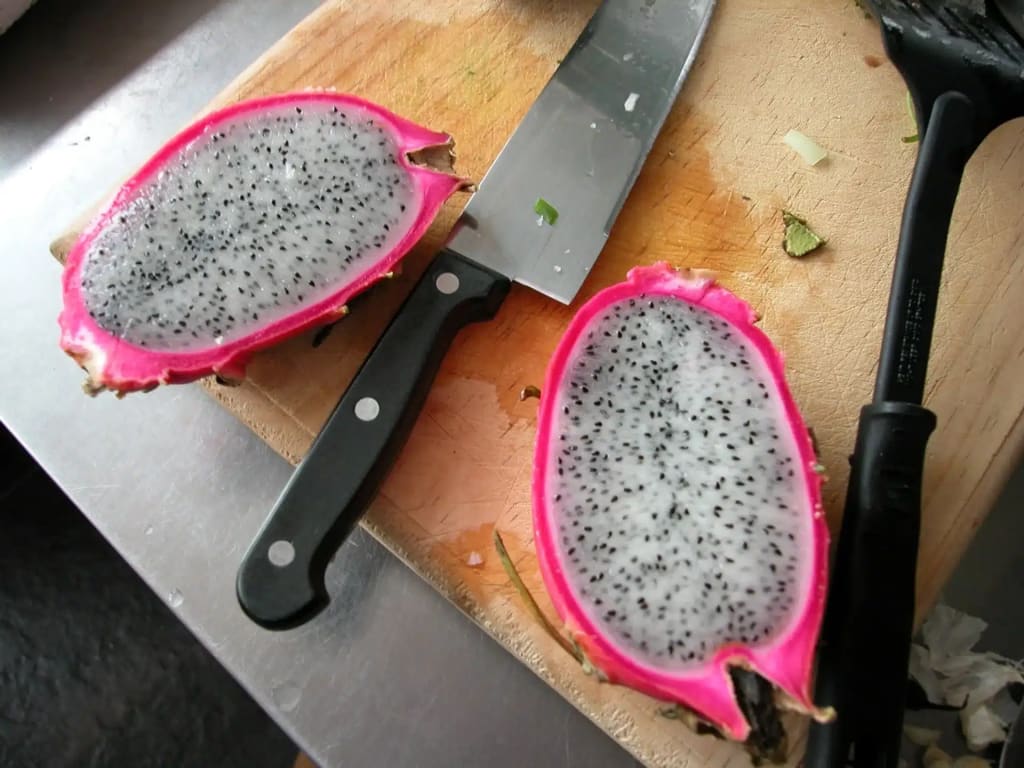
Pitahayas come from different cactus species and possess an intense bright color.
Its flavor is similar to a combination of strawberry and pear, it is very fresh and juicy.
18. Mango Ataulfo
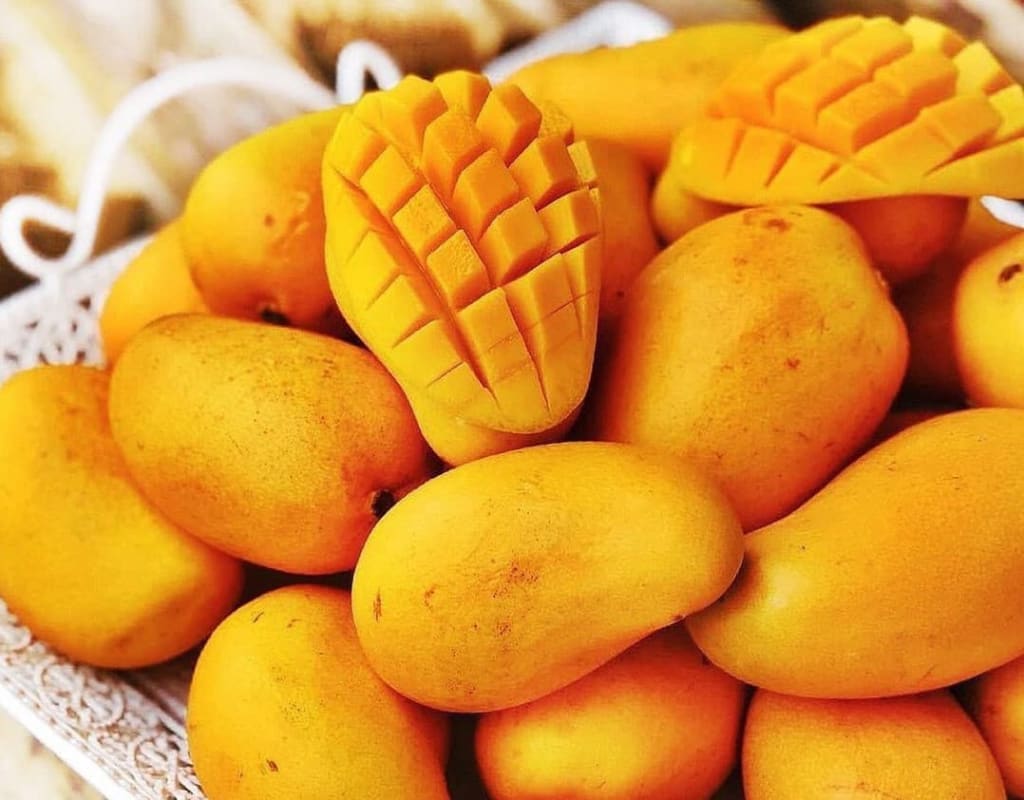
I saved the best for last, Mangos!
The Ataulfo Mango variety is named in honor of its creator Mr. Ataulfo Morales Gordillo, a producer from Chiapas who in 1963 experimented with different grafts with his mango trees.
In 2002 the denomination of origin was granted to this delicious Mexican product.
This fruit is characterized by a sweet and refreshing flavor. Its average composition is 69% pulp, 19% peel, and 8.5% seed.
It is one of the most beloved Mangos in Mexico due to its generous amount of pulp obtained from just one piece.
In addition to being very sweet, the pulp is not acidic and has very little fiber content. Thanks to the firmness of its shell, it is a resistant fruit that withstands post-harvest handling.
Fruits From Mexico: Conclusion
In conclusion, the vibrant array of fruits from Mexico offers not only a burst of flavor but also a journey through the country’s rich agricultural heritage and diverse landscapes.
From the tropical sweetness of Mango Ataulfo to the tangy zest of Xoconostle, each fruit tells a story of Mexico’s fertile soils, warm climate, and skilled farmers.
Whether enjoyed fresh, blended into refreshing beverages, or incorporated into savory dishes, these juicy delights are a testament to Mexico’s culinary prowess and its ability to bring joy to tables around the world.
So, the next time you bite into a luscious Mexican fruit, savor not just its taste, but the essence of a nation that nourishes both body and soul with its bountiful harvests.